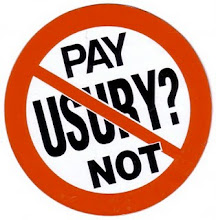Dancing Rabbit Ecovillage Introduces Exchange Local Money (ELM)
“Dancing Rabbit Ecovillage is an intentional community dedicated to living sustainably. We are located on 280 acres of beautiful Missouri rolling hills, purchased by our land trust in 1997. Our land includes six ponds and a small creek that runs much of the year. We have 40 acres in woodland plus 30 acres where we have planted over 12,000 trees as part of our restoration efforts. We are housed in a variety of living arrangements, adhere to many different diets, and work on varied projects. Our community is flexible enough to include egalitarian and co-housing communities, and individual households. Building styles here range from Natural building and Green building all the way to more conventional construction methods.” (snip) … http://www.dancingrabbit.org/about-dancing-rabbit-ecovillage/press/press-kit
The Dancing Rabbit Mission Statement reads "To create a society, the size of a small town or village, made up of individuals and communities of various sizes and social structures, which allows and encourages its members to live sustainably.” It follows that the Dancing Rabbit Ecovillage would welcome the launch of a usury free, local currency."
Local Currency
Here at Dancing Rabbit we have a local currency system called the Exchange Local Money (ELM) system. Almost everyone here has an ELM account, and we can buy almost anything we want with it, including all of our daily living expenses. The ELM system also gives us a mechanism for gathering money to use on projects that help our community develop and thrive. The ELM system is a modified version of a LETS (Local Exchange Trading System), a general term for locally-initiated, democratically-organized, not-for-profit community enterprises that provide a community information service and record transactions of members exchanging goods and services. The term LETS originated in 1983 by Michael Linton. You can read the Wikipedia article about LETS for more information. ELM balances are tracked in a database that’s accessible through an online interface. Users can log in to see their balances, view a list of goods and services being offered, and make exchanges.
How the ELM System Works
Our daily interactions with the ELM system are very simple. It works a lot like PayPal, but without the fees. Similar to PayPal or any other bank account, ELMs go into your account when other people send them from their own accounts. ELMs leave your account when you send them to other people in the system. The more you acquire, the more you have to spend. Organizations and businesses like accepting ELMs for payment because the online database keeps a record of exchanges in real time, which is an excellent way to double-check bookkeeping. Having a convenient online system also encourages people to pay promptly. People can use the local currency to pay all of their living expenses as well as many luxuries. Housing, transportation, food, telephone, laundry, photocopies, beer, coffee, showers, massages and much more are all available from ELM-accepting businesses and co-ops.
The key to understanding how the ELM system works is to start with the concept that everyone starts with zero ELMs. Every time a transaction occurs between two accounts, one account goes down and the other goes up by the exact same amount. The total number of positive ELMs in all accounts is always equal to the total number of negative ELMs in all accounts. Currently, individuals are not permitted to have negative account balances. Some community organizations are permitted to carry negative balances, with feedback and oversight by the ELM-using community and ELMs committee. In some ways, a negative balance allowance is like a loan or line of credit. It means that we as a community give these organizations the right to use ELMs before they’ve accumulated them. Unlike a loan or line of credit, though, there’s no penalty or interest for having a negative balance for any length of time.
We do screen requests for negative balance allowances so that we only give them to organizations shown to be performing well financially. The only businesses allowed to hold negative balances are those which buy goods from outside the community with dollars and sell them within the community for ELMs. The account balances and transaction histories of all organizations and businesses that have negative balance allowances are public information for all ELM users to see.
What’s Sustainable about Local Currency
ELM is different from a bank account in that when we put money in, we are not giving it to the bank to invest as it sees fit. Instead we are giving it to our own community to invest in infrastructure that will benefit us, our community, and the projects and causes we believe in. In other words, the more people who hold positive ELM balances and the higher those balances are, the more money we have to collectively invest in our community infrastructure and institutions. Another benefit of local currency in general, and ELM in particular, is that the convenience of using ELMs encourages us to shop locally, which is good for our environment and our local and internal economies. By maintaining and using the ELM system we enable ourselves to fund projects that will make our demonstration village more viable and more effective in its mission to show the world one great way to live within our ecological means.” (snip) …
This article is originally published at this website: http://www.dancingrabbit.org/about-dancing-rabbit-ecovillage/social-change/economy/local-currency



0 Comments:
Post a Comment
<< Home